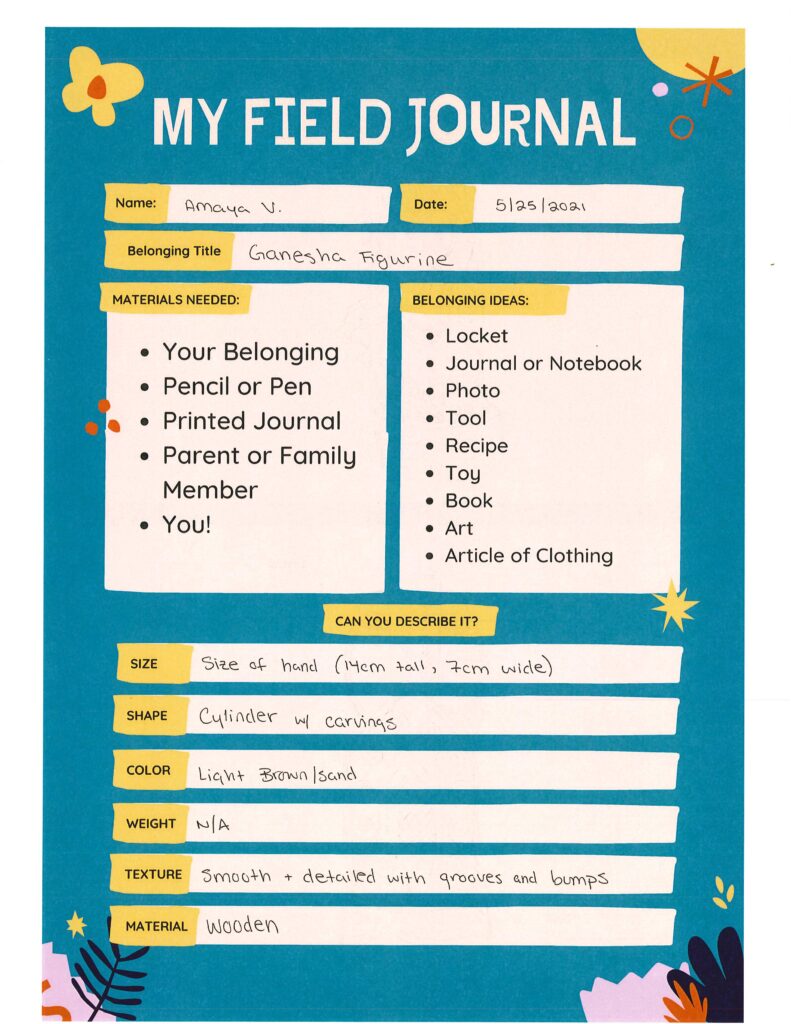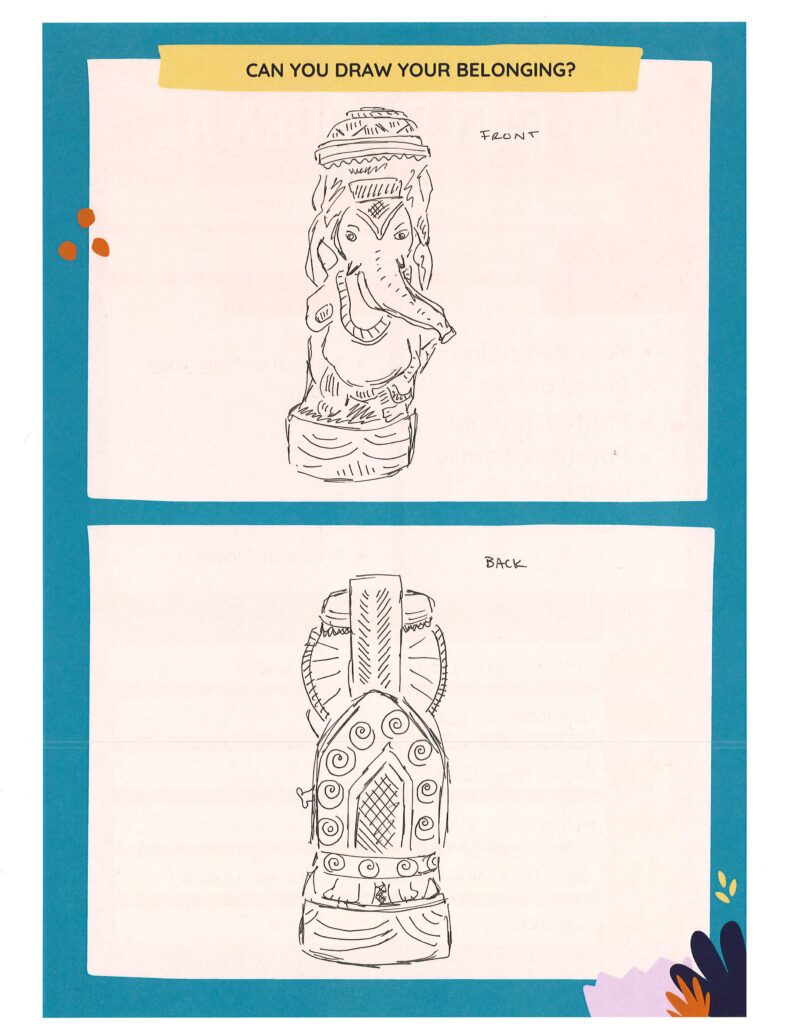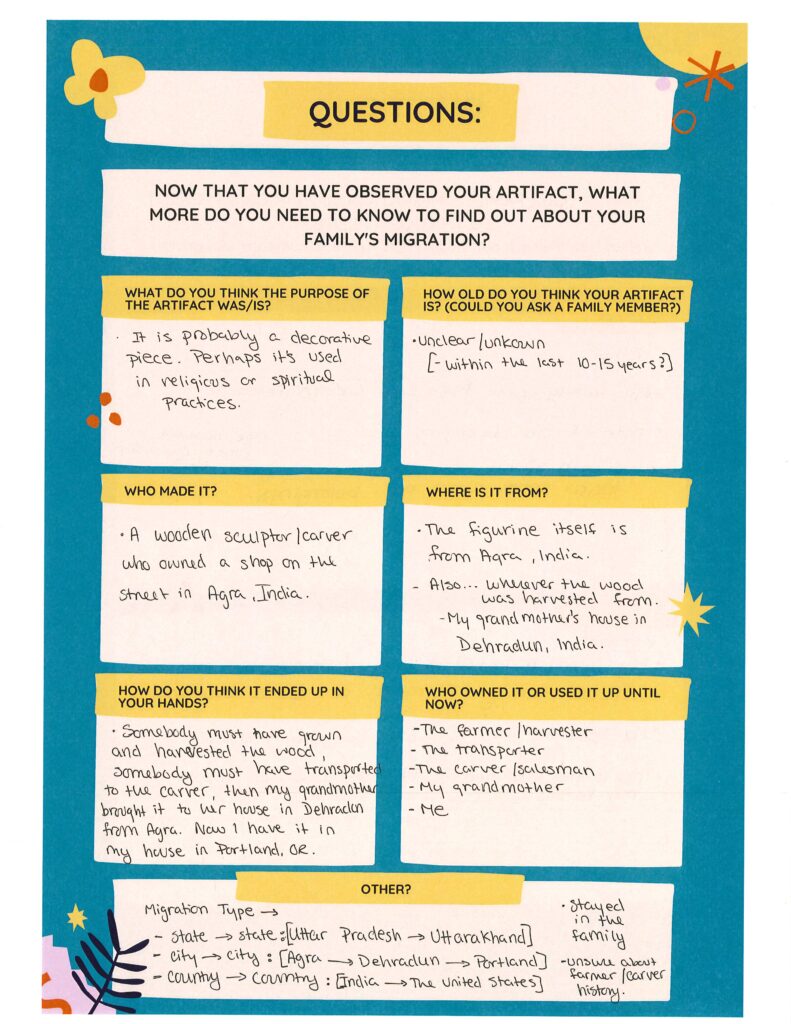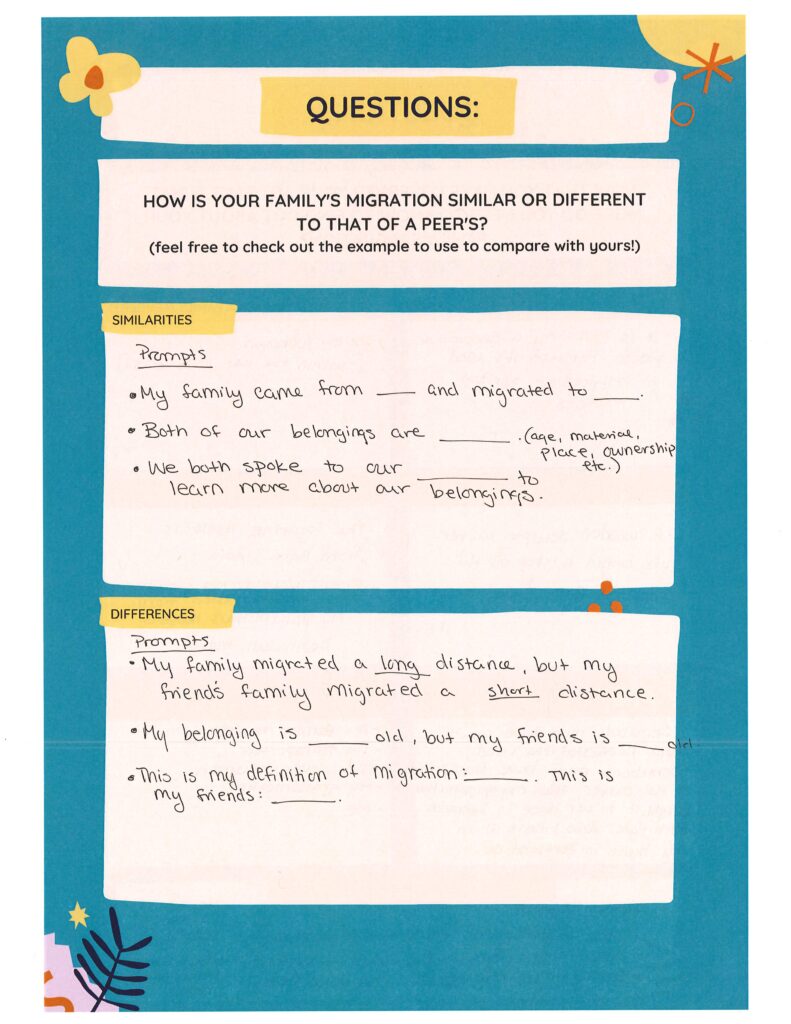Being an archaeologist is a lot like being a detective. You uncover clues about how people in the past lived. Archaeologists learn about how they lived by looking at what they owned or their belongings which are called artifacts. They observe belongings, write things down about them, maybe draw them, and then try and find out more about it to learn how the people lived.
In this activity YOU will be the archaeologist! You will find a belonging in your house or maybe a family member’s house and observe it like an archaeologist would. The point of this activity is to learn about your family’s migration (where they lived before they came to their current homeland how they got here!) by learning about your chosen belonging. Migration is something that everybody in the world experiences at some point. It is when people move to a new place: that could be from home to home, land to land, city to city, country to country and more.
There are guiding questions to help you learn about your belonging and about migration. It will probably be helpful for you to talk to a family member, your mom, dad, grandmother or somebody who knows a little bit about the history of your belonging to get to learn more about it!
Also, if you want, after you finish making your own field journal you can share it with friends or with me through the google survey sheet so I can see your belonging too! You are also welcome to use my example field journal to compare your belonging and family’s migration to mine!
Good Luck!
Information for Adults
Explaining the reality and harshness that is child migration is uncommon, if not taboo, in school systems, but it is important and archaeology can help.
Some children, don’t even learn about child migration but others are living it, especially along the US/Mexico border where child migration has only increased in recent years. As of March 18, 2021 there were over 9,200 children in the custody of HHS. The majority of these children were teenagers while hundreds more were under the age of 12. Most cross at the Texas border in the Rio Grande Valley and if these children are not caught and sent back, then they must withstand the inhumane conditions that HHS has set up as a temporary solution. Some may make it out of holding to enter into the American school system where their life journey isn’t being talked about at all. They are the living proof that US immigration policy needs to change, and that awareness needs to be raised in schools because this is not an ‘adult problem’ it is a child’s reality.
Archaeology is one way to teach other children about this crisis and the experiences some of their peers go or have gone through. By studying a belonging and learning about where it came from, who owned it, how it ended up in this place now, you can uncover the narrative of the owner. I have created an activity that is an easy bridge into having these conversations because it is centered around your own family’s migration history rather than somebody else’s. It is designed to make children curious about migration as a topic through the means of a belonging, which seems less daunting than delving right into some of the harsh realities if they have never been exposed before to them before. The activity takes you through the same fundamental steps that professional archaeologists use to learn about belongings they find.
They find a belonging and interact with it: touch it, feel its weight, understand its fragility. They practice their observational and writing skills when they describe and/or draw it. They can then learn oral history by asking where it came from and whose it was. Lastly, they can engage with that higher-level analysis through questioning how their story is different or similar from another peer’s.
Another teaching tool I want to point out is Jason De Leon’s traveling Undocumented Migration Project exhibit. De Leon is a famous archaeologist who uses ethnography, archaeology, visual anthropology, and forensic science to understand the social process of migration and the violence of US immigration policy today. His contributions to the UMP exhibit seek to raise awareness about clandestine movement between Latin America and the United States. The exhibit is scheduled to come to Portland State winter 2022 [more details will come out soon].
I sincerely urge you to visit the UMP website or the traveling exhibit next year and begin to have those conversations with your children about the reality of their peers’ lives [there are links below for more information]. No change can be made when what is going on isn’t even talked about. We must start young, as children are the next generation with an incredible capacity to be compassionate and empathetic–they lack the normalized biases and restrictions that we as adults carry with us and emit–and create a space and energy of inclusiveness and hope, which is something that this world needs and all children alike can foster.

Hello! My name is Amaya and I study Anthropology and Spanish at Portland State University. I am interested in youth and development as well as culture and migration studies. When I graduate I hope to join the Peace Corps or a similar type of organization and work with youth!
My family history has a lot of migration in it, but most recently is my father who was born and raised in India. I filled out an example field journal for you to look at as well.
Please feel free to upload a picture of your belonging or field journal in the google feedback form. I would love to see what y’all found and learned!
Enjoy the Roadshow!



